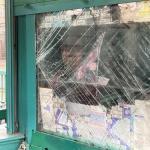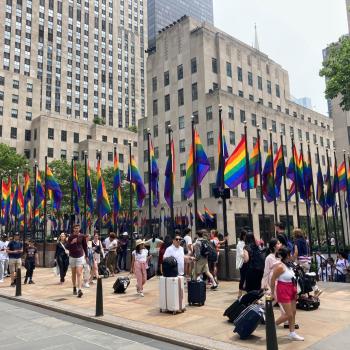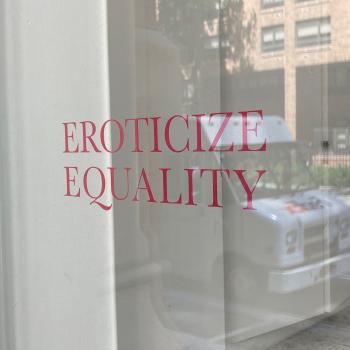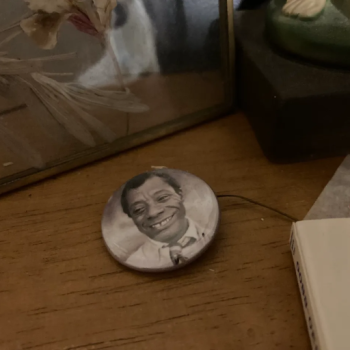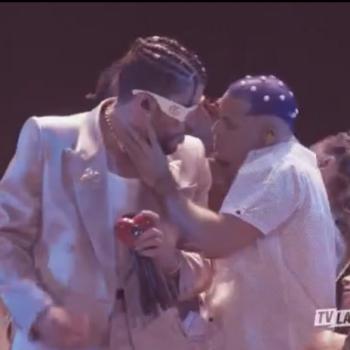if you’re interested in preordering a copy of cracks in pomo: the zine or in making a financial contribution, email stephenadubato at gmail dot com
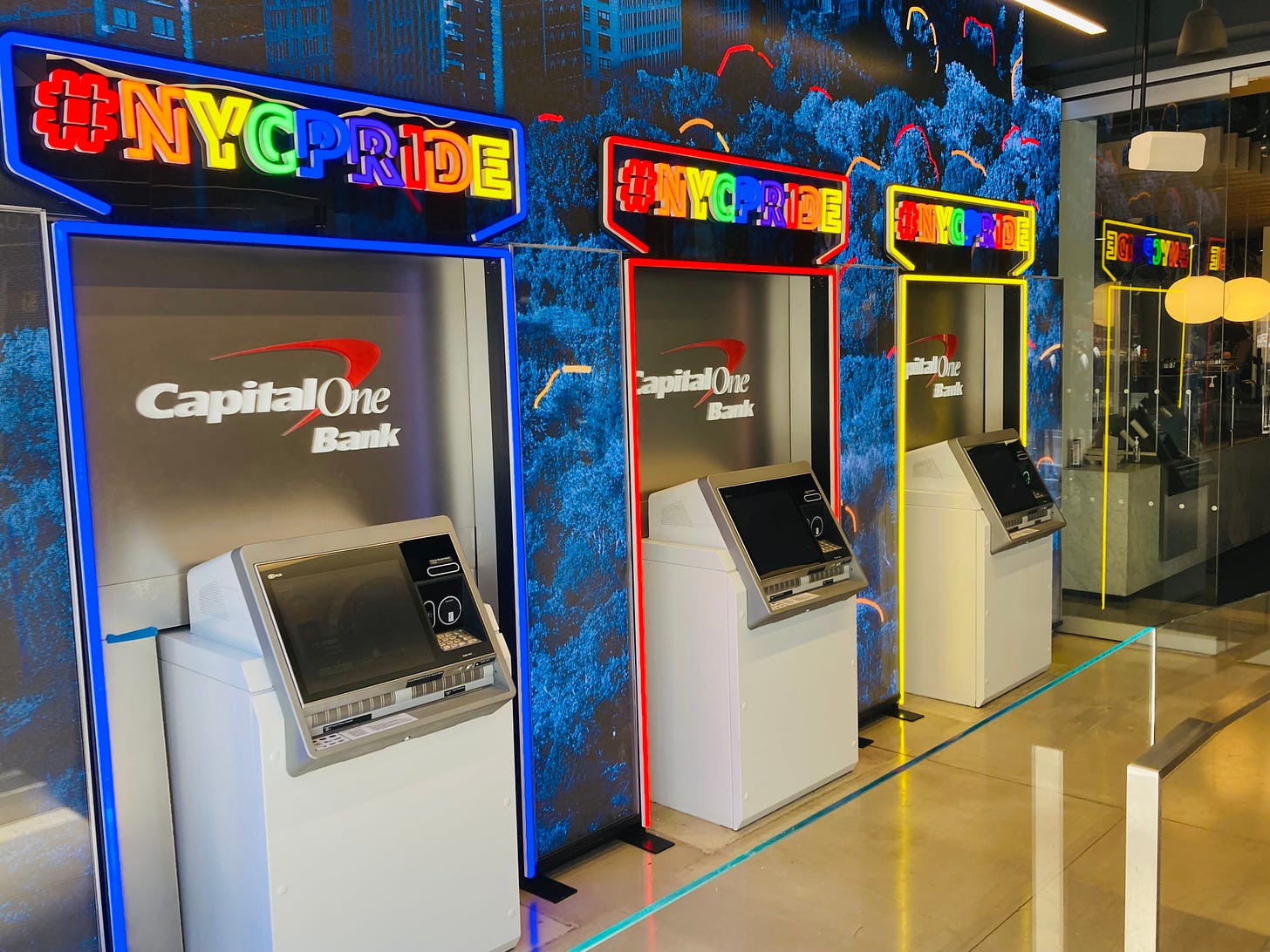
With the exception of a normie remnant who has yet to be tainted by the cynicism of internet culture, we’re far past the point of Pride celebrations having any semblance of moral substance or, in the least, being “cool.”
We can always count on neoconservative and religious reactionaries who have been there since Day 1, denouncing Pride for defying the oxymoronic bogeyman known as “traditional American family values” (lulz @ tradition and American being used in the same sentence) and for indulging one of the seven deadly vices (which technically speaking is a worse sin than sodomy and though constituting a sin “crying to heaven for vengeance” is merely a sin of the flesh).
And toward the latter half of the 2010s, we found more and more queer-identifying people clamoring against Pride’s turn toward bourgeois respectability and capitalist interests. Being gay, they say, used to be transgressive, it used to be…well, queer. But after gay marriage was legalized and homosexuality was accepted as something “normal,” just another morally neutral way to “be oneself,” radical or dare I say “traditional” activists decried the co-opting of their movement by heteronormative ideals and State/corporate power.
But at this point, posting on Twitter about how you’re boycotting pride for your moral values (whether they be conservative or radically progressive) has become nearly as cringe as celebrating Pride unironically. My projection is that we are now arriving at a “Post-Pride” moment. The Pride movement has been exposed for its lack of substance–if you have any doubts, please look at the barrage of tweets posted by attention-hungry cishets on June 1st proclaiming their allyship or worse, suddenly discovering that they have been gay/nonbinary/trans all along and finally have plucked up the courage to share their true selves with the world.
These narcissists LARPing as paragons of courage should be enough to show us how queerness–when drenched in sentimental or moralistic posturing–is actually quite uncompelling and just plain boring. A growing mass of people are discovering (thanks in part to iconoclasts like Camille Paglia and Milo Yiannopoulos, whose personas in a way reincarnate the amoral decadent sensibilities of the likes of Oscar Wilde and Quentin Crisp) that queerness is much more interesting when it is lived as a transgressive feat of pagan revelry.
Thus why I predict our Post-Pride moment will consist of attending Pride parades, but this time as a form of metaironic performance art…a form of detached “anthropological research” if you will. Less and less people will go out of a desire to celebrate “who they are.” We will instead find people amused in a snarky, disinterested way by the cognitively dissonant performance of earnest sincerity that is Pride.
******************************
On another note, I’m hoping our postlib friends who have been trad/queer horseshoe theory-pilled will churn out more writing about the class divides implicit in the presence of rainbow flags in a given locale. Surely, (as John Milbank rather articulately pointed out in 2017) it’s no longer a secret that the standard LGBT discourse is parasitic on an elite-technocratic mode of global capitalism that alienates the working class–both on an economic and cultural/moral plane.
I think it’s also worth looking at the extent to which ethnicity plays a role in rainbow flag politics. Take for example the Ironbound (East Ward) section of Newark, New Jersey. The neighborhood’s roots are deeply Portuguese (they still own the majority of the property–both businesses and residential), along with a significant presence of Spaniards, Brazilians, Ecuadorians, and Salvadorians. Aside from two Walgreens and a Dunkin and McDonalds, the rest of the neighborhood’s businesses are locally owned mom-and-pops with strong ties to the local community–including to churches, schools, and sports/social clubs.
The only place flying a rainbow flag last June was a gentrified “hipster” cafe featuring millennial-aesthetic decor and overpriced almond milk lattes–a sore thumb compared to the plethora of down-homey reasonably priced cafes in the area. The only thing millennials love more than avocado toast is moral validation (ie attention). Walk a few blocks over to the Central Ward whose gentrification is being propelled forward by office buildings hosting major corporations which have driven out black residents and their businesses, and you’ll find rainbow flags in every window.
Similarly, in Bay Ridge, Brooklyn–a neighborhood diverse both economically and ethnically (Italian, Greek, Irish, Arab, Norwegian, Mexican, Chinese, et al) and chock full of locally owned mainstays, I only saw one rainbow flag in front of a brownstone which I’d assume was home to a Log Cabin Republican, as it was flying directly above a “friends don’t let friends vote Democrat” sign.
In some cases, the lack of rainbow flags in multiethnic (non-assimilated) working-middle class urban enclaves is due to explicit homophobia. But oftentimes, their absence stems from other preoccupations. One woman in Brooklyn told me she loves her gay son (they’re Italian…need I say more?) and has even told off one of their relatives for using the word “faggot” in her presence. But she finds outward displays of her “allyship” to be ostentatious and self-absorbed. Another friend, an open lesbian, in the same neighborhood “hates pride” because she thinks it’s ridiculous (she actually used another r word that I’m not going to use here). She rather spend her time worrying about getting a union job so she and her girlfriend can finally put a down payment on a house.
These types of neighborhoods embody a cultural sensibility that contrasts sharply with the genteel, elitist sensibility that is more characteristic of the bourgeois WASPy suburbs and gentrified parts of the city. People in these areas tend to have more meaningful ties to the people and businesses surrounding them, and thus their concerns are more concrete, more pragmatic: from worrying about paying the bills on times to finding meaning in spending time with and caring for family members…rather than fixating on how to identify themselves or on abstract political issues that are far removed from how they live their day to day lives.
$upport CracksInPomo by choosing a paid subscription of this page, or by offering a donation through Anchor. Check out my podcast on Anchor and YouTube and follow me on Instagram and Twitter.
photo taken in lower Manhattan.
For more on pride, check out my essays in CWR on Rainbow Capitalism, in America on Love Victor and ehtno/class divides on sexuality, and in Ethika Politika on Obergefell.


